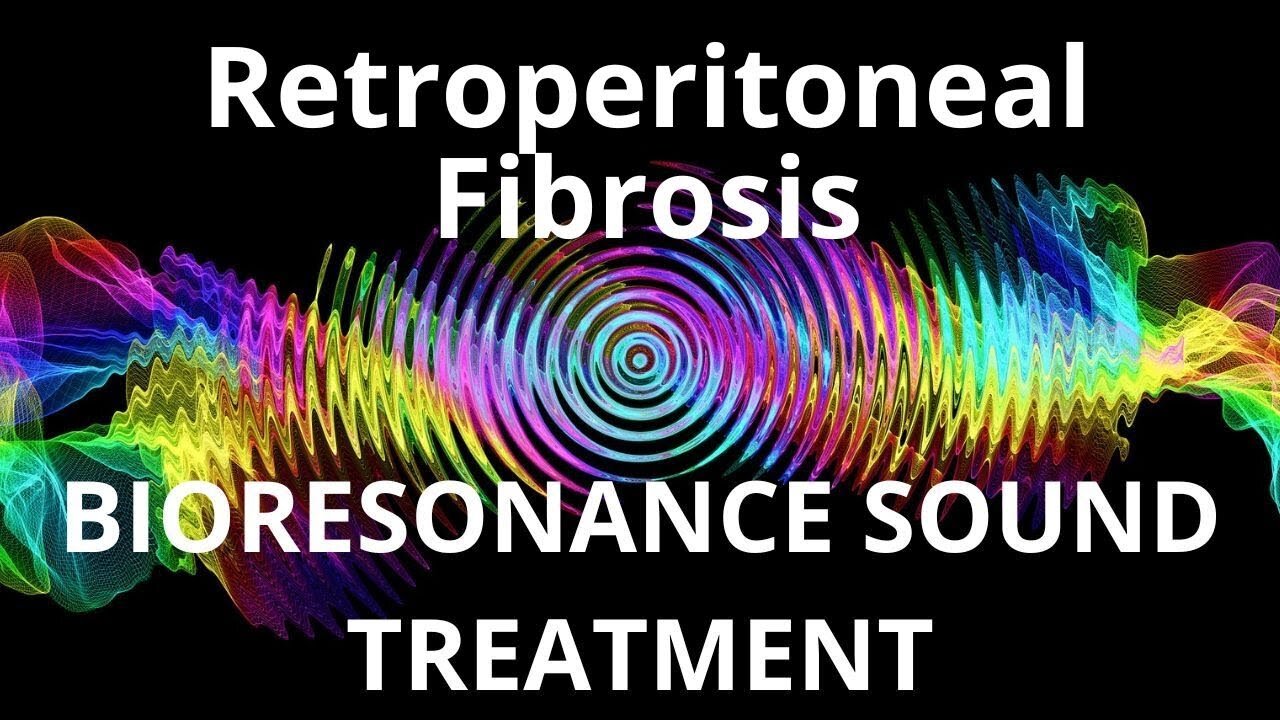Premium Only Content

Retroperitoneal Fibrosis_Sound therapy session_Sounds of nature
#soundtherapy, #fibrosis, #retroperitoneal, #adjunctivetreatment, #conventionalmedicine
Retroperitoneal Fibrosis (RPF) is a rare and challenging condition characterized by the abnormal growth of fibrous tissue in the retroperitoneal space, which can lead to the compression and obstruction of nearby structures. While traditional medical interventions play a crucial role in managing RPF, the integration of complementary therapies, such as resonant frequency sound therapy, can offer additional benefits.
Retroperitoneal Fibrosis is a condition in which excessive fibrous tissue develops in the retroperitoneal space, enveloping and constricting vital structures such as the ureters, major blood vessels, and nerves. This can result in complications such as kidney dysfunction, urinary obstruction, and pain. Traditional treatments for RPF typically involve medications to control inflammation, surgery to remove the fibrous tissue, or the placement of stents to alleviate obstructions.
Resonant frequency sound therapy is a non-invasive treatment that utilizes specific sound frequencies to stimulate the body's natural healing mechanisms. This therapy is based on the principle that different organs, tissues, and cells in the body have their own resonant frequencies. By exposing the body to these frequencies, it is believed that imbalances can be corrected, promoting healing and restoring harmony within the affected areas.
Benefits of Resonant Frequency Sound Therapy for RPF:
1. Reduced inflammation and fibrosis: Resonant frequency sound therapy has shown potential in reducing inflammation and fibrosis in various conditions. By targeting the affected retroperitoneal tissues, this therapy may help to alleviate inflammation, slow down the progression of fibrous tissue growth, and potentially improve the symptoms associated with RPF.
2. Improved blood circulation: Retroperitoneal Fibrosis can lead to compromised blood flow to the affected organs and structures. Resonant frequency sound therapy has been reported to enhance blood circulation, promoting the delivery of oxygen and nutrients to the affected areas. This increased blood flow may facilitate the healing process and alleviate symptoms caused by reduced circulation.
3. Pain reduction and improved quality of life: RPF often causes significant pain and discomfort for individuals. Resonant frequency sound therapy has been found to have analgesic effects, reducing pain levels and improving overall quality of life. By integrating this therapy with conventional treatments, patients with RPF may experience enhanced pain relief and a better overall well-being.
4. Complementary to conventional treatments: Resonant frequency sound therapy can be used alongside traditional medical approaches for RPF, such as medications or surgery. Integrating this therapy as an adjunctive treatment may potentially enhance the effectiveness of conventional interventions, leading to improved outcomes for individuals with RPF.
Conclusion:
Resonant frequency sound therapy holds promise as an adjunctive treatment for Retroperitoneal Fibrosis, offering potential benefits in reducing inflammation, promoting improved blood circulation, relieving pain, and enhancing overall well-being. By combining this therapy with conventional medical interventions, individuals with RPF may experience a comprehensive and holistic approach to managing their condition.
TO ACHIEVE A POSITIVE RESULT, DAILY LISTENING TO VIDEOS IS REQUIRED.
I wish you health and prosperity!
You can purchase unique medicines in my store:
https://store11998180.company.site/
You have the opportunity to support the channel:
https://destream.net/live/RadSiarAl/donate
-
 UPCOMING
UPCOMING
The Kevin Trudeau Show
2 hours agoWhat Women Do Wrong in Relationships (From a Man’s Perspective) | The Kevin Trudeau Show | Ep. 69
101 -
 19:49
19:49
This Bahamian Gyal
13 hours agoFIRED after VENTING online about ELECTION results
2047 -
 LIVE
LIVE
REVRNDX
2 hours agoYOUR NEW FAVORITE RUMBLE STREAMER
101 watching -
 1:04:41
1:04:41
Russell Brand
2 hours agoIs This the End? Climate Emergencies, Kamala’s Chaos & Political Meltdowns EXPOSED! – SF502
73.4K92 -
 LIVE
LIVE
The Charlie Kirk Show
2 hours agoThe Harris Team's Comical Post-Mortem + Trump the Peacemaker + AMA | Paxton, Greenwald | 11.27.24
7,627 watching -
 1:21:15
1:21:15
RaikenNight
2 hours ago $1.59 earnedWanted to take the time to welcome all the new people coming over to Rumble
5.66K1 -
 15:12
15:12
Goose Pimples
5 hours ago7 Ghost Videos SO SCARY Your Phone Will Call 911 Itself
7781 -
![Almost Turkey Day! Ranked Heihachi into Blue Ranks? Nani?!?[Tekken 8] #RumbleTakeOver](https://1a-1791.com/video/s8/1/5/t/u/_/5tu_u.0kob-small-Almost-Turkey-Day-Ranked-He.jpg) LIVE
LIVE
CHiLi XDD
4 hours agoAlmost Turkey Day! Ranked Heihachi into Blue Ranks? Nani?!?[Tekken 8] #RumbleTakeOver
300 watching -
 59:24
59:24
The Dan Bongino Show
4 hours agoCoping Hollywood Actress Says Trump Supporters Are "Uneducated" (Ep. 2379) - 11/27/2024
562K1.49K -
 1:58:57
1:58:57
Benny Johnson
3 hours agoKamala Campaign EXPOSED as Scam To DEFRAUD Democrats | Spiraling Drunk Kamala Posts Slurring RANT 🤣
72.3K86